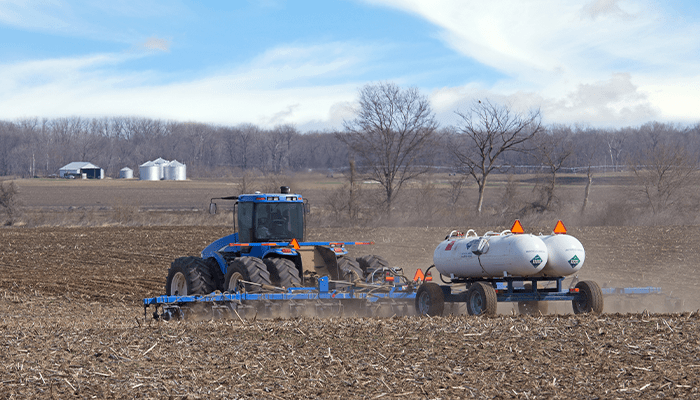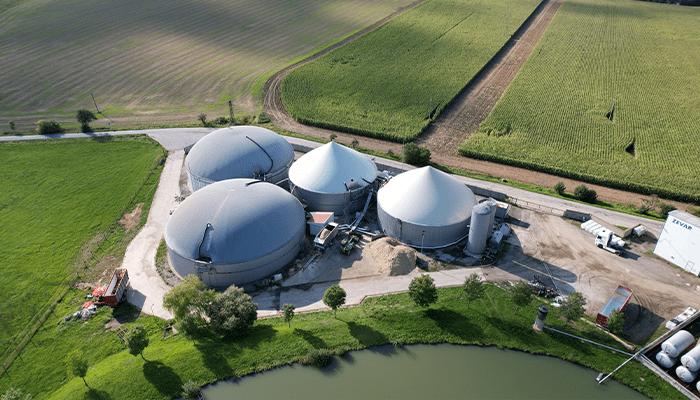
Best Practices for Avoiding Electrical Risks
Electrical risks are one of the most overlooked hazards in agriculture. According to the National Ag Safety Database (NASD), thousands of workers are shocked and burned due to accidental contact with electricity each year, and an estimated $1.2 billion in property damage occurs because of faulty electrical usage.
Accidents happen for a variety of reasons. One of the biggest dangers is overhead power lines. Workers using portable grain augers, large wagons, combines, fold-up cultivators, and other tall equipment should know where power lines are located as well as the clearance needed for equipment that must travel underneath the lines. Maintaining a minimum 10-foot clearance between the power line and the top of equipment traveling under it is a good rule of thumb. It’s also important to keep in mind that some equipment during transport may be taller when in use.
Electrical current from high voltage lines can flow through a vehicle and energize the ground up to 100 feet away. If a vehicle comes in contact with a power line, workers should stay in the vehicle unless there is a fire, in which case they should jump as far away as possible. Immediately contact the utility company to have the power shut off. Further, the NASD cautions:
- No part of the worker’s body should touch the equipment and the ground at the same time.
- Both feet should always remain in contact with the ground. Shuffle slowly away from the equipment until at least 100 feet away.
- Once away from the vehicle, please don’t touch it or try and get back on because many electrocutions occur when someone dismounts, then gets back on the vehicle, assuming there is no problem.
Electrical hazards can also result from the degradation of electrical wiring due to rodents, normal wear, corrosion, or improper wiring. Regularly checking electrical panels, lighting, equipment, wiring connections, and outlets on buildings and equipment is an important step towards protecting workers and property. And because water is essential to any agribusiness, ensure all wiring is protected against contact with water.
If you have livestock, vapors from animal waste in confinement housing can corrode electrical components. High humidity in milking facilities can deteriorate conventional metal electrical boxes.
To minimize electrical risks:
- Determine risks for potential electrical shock and restrict access to those areas.
- Locate all buried lines and keep the information available for reference before any digging operations.
- Provide adequate training for all workers. Train them in rescue and emergency procedures so everyone in your operation knows what to do in an electrical emergency. Train seasonal workers about dangers and give additional reminders.
- Apply decals to all equipment that may pose electrical hazards and explain decals to workers who work with the equipment.
- Inspect equipment for transport height and determine clearance with any power lines under which the equipment must pass.
- Use underground feeder (UF) electric cables.
- Make sure all control boxes, light fixtures, switches, and receptacles are made of corrosion-resistant materials.
- Install watertight covers on receptacles and switches and over light bulbs.
- Locate the distribution panel away from severe environments. If a clean, dry area such as an office is unavailable, mount the distribution panel in the driest place possible. If outside, locate it under an awning.
- Run conductors through horizontal conduit and seal the conduit ends so moisture cannot enter the distribution panel. When conductors run from a warm, moist environment to a cold location, condensation can form and enter the distribution panel.
- Review the possibility of underground utility supplies for new or replacement power lines.
- If you have a standby power system, review its location, operation, and importance with all workers.
Avoid tragic accidents by taking the time to monitor work that takes place around power lines and electrical equipment. Contact AssuredPartners Agribusiness resources to help your operation foster a culture of safety.
Featured News & Insights

Insurance premiums in the excess and umbrella markets continue to rise, and one of the key reasons is something that often goes unaddressed outside the legal and insurance worlds: abuse of the legal...

Nitrogen is the cornerstone of crop production, vital to plant health and growth. However, one of the most efficient yet challenging sources of nitrogen is anhydrous ammonia (NH3). While NH3 is an...

Carbon credits as a concept have been around for years, offering both environmental and economic opportunities for the agriculture sector. With sustainable practices taking center stage, it's...